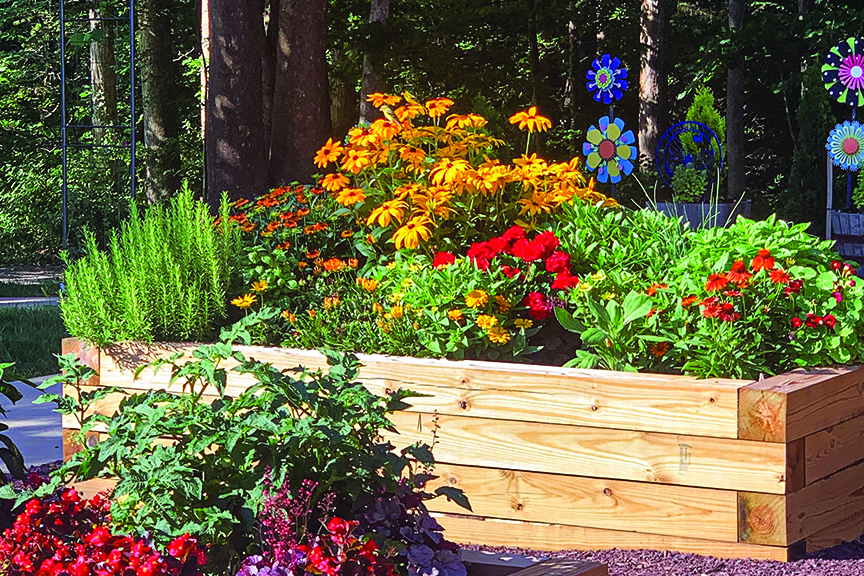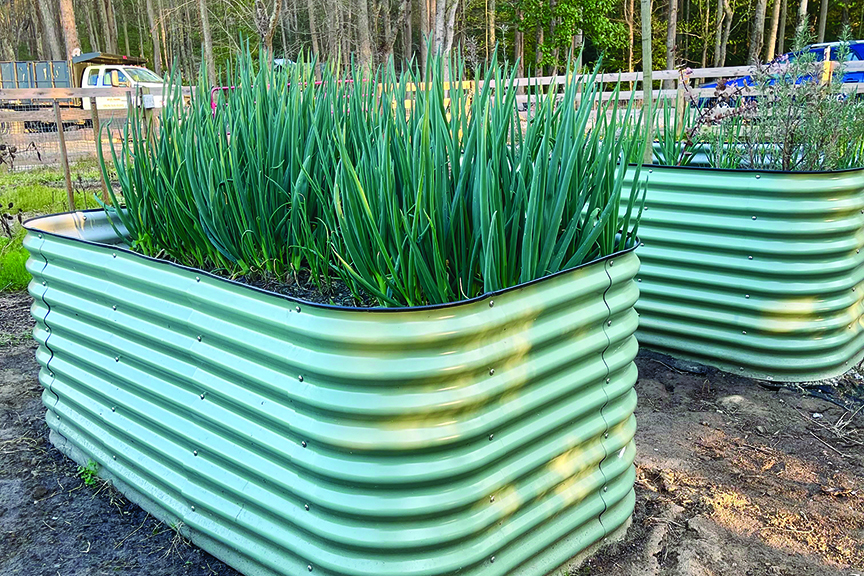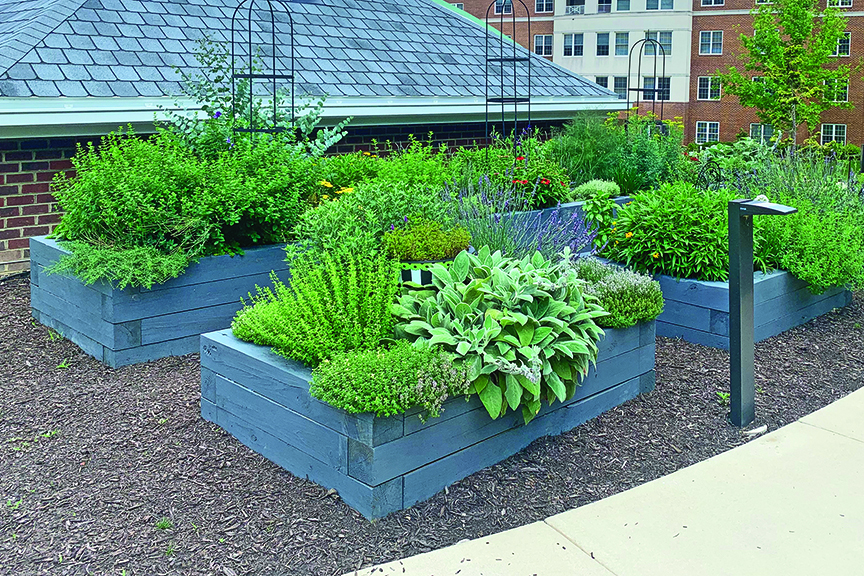Exploring the world of raised garden beds
August 2025

Seasonal shrubs work nicely in this stock tank. (by Beth Burrell)
by Beth Burrell, Contributing Columnist
Raised garden beds offer more than just visual charm — they’re a smart solution for gardeners of all skill levels. Whether you’re growing flowers, herbs, fruits or vegetables, raised beds improve drainage, allow for better soil control and reduce physical strain. If you’re tired of bending, kneeling or crawling around your garden, raised beds can make your gardening experience easier and more enjoyable.
One of the biggest benefits of raised beds is comfort. I’ve never enjoyed the physical toll of in-ground gardening — bending over for long stretches while weeding, planting or harvesting isn’t ideal for anyone. Raised beds let you tend your garden at a more ergonomic height and you can better enjoy your plants both from a distance and up close.

Cedar timbers will last for many years on this 24-inch constructed garden bed. (by Beth Burrell)
MATERIAL CHOICES AND HEIGHTS
Wood is a classic and durable choice for raised beds. Cedar is a long-lasting material, but it is also pricey. In contrast, treated lumber is more affordable and still built to last. I personally prefer beds that are 24 to 30 inches high — perfect for most crops and very easy on the back.
If you’re planning a large-scale vegetable garden, consider beds between 12 and 18 inches high. Taller beds make growing crops like tomatoes or squash tricky — you don’t want to be climbing a ladder to harvest them. Layout and placement are entirely up to you, and part of the fun is designing a garden that reflects your personal style. For an extra touch, stain your wood rather than paint it — grey or black stains not only look great but also help protect the wood over time.
AFFORDABLE ALTERNATIVES: STOCK TANKS
For a durable and budget-friendly option, galvanized stock tanks are an excellent choice. I buy stock tanks from Tractor Supply — my go-to is the 170-gallon, oval tank (6 feet long, 2 feet wide and 2 feet high). They withstand harsh weather, resist rust and last for years. Even though these come with drain plugs, it’s essential to drill at least 10 additional holes in the bottom for proper drainage. If you’re placing one on a patio or hard surface, line the bottom with window screen to reduce dirty runoff.
Smaller spaces benefit from the 100-gallon version (4 feet long, 2 feet wide and 2 feet high), which is compact but still spacious enough for vegetables and herbs. The only drawback is its shiny silver finish, which reflects sunlight intensely. A simple coat of Rust-Oleum paint in your favorite color adds character and helps reduce the glare.

Vego Garden, a modular metal garden bed kit, comes in many sizes, shapes and colors. (by Beth Burrell)
CONVENIENT KITS AND MODULAR BEDS
On my patio, I use the VegTrug —a raised bed kit that’s perfect for standing while gardening. It’s accessible for anyone using a walker or rollator and comes in several styles and sizes. I’ve added the greenhouse and shade cloth accessories to extend my growing season, and I love the sleek design.
Another attractive yet more labor-intensive option is modular metal garden bed kits. These come in many sizes, shapes and colors. I prefer the Vego Garden brand for its durability and quality over cheaper alternatives. When comparing kits, be sure to check the metal thickness and construction — some look nice online but won’t hold up well.

Staining your wooden raised beds adds a touch of class and whimsy to the landscape. (by Beth Burrell)
SOIL TIPS FOR SUCCESS
Regardless of the bed style you choose, start with a high-quality soil blend. I like a 50/50 mix of topsoil and mushroom compost. Fill the beds to the top and compact them slightly, as the soil will settle after watering and planting. Healthy soil is the foundation of productive gardening.
With raised beds, your gardening can be as easy, efficient and enjoyable as you make it. Whether you’re short on space, time or physical strength, there’s a raised garden solution that fits.
Beth Burrell holds degrees in landscape design and ornamental horticulture. Her family gardens have been featured on the TV show Home Grown.
